Featured
Observing history in Africa
April 5, 2011
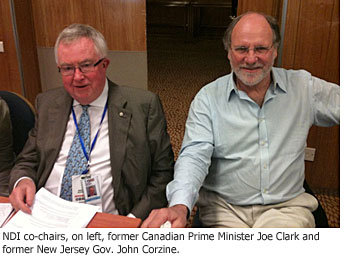 Once again, Nigeria is at a turning point in its democratic evolution. And I’m there to monitor its elections as part of an international delegation headed by the Washington-based National Democratic Institute.
Once again, Nigeria is at a turning point in its democratic evolution. And I’m there to monitor its elections as part of an international delegation headed by the Washington-based National Democratic Institute.
Time and technology permitting, I’ll be documenting my experiences in words and pictures on a special page on my website called Nigerian Chronicles. Please join me there for an up-close look at this troubled nation’s quest for self-governance.
Posted 4/5/11
Budging on the budget
March 2, 2011
We spoke—and the governor listened.
This week, Gov. Brown’s office announced that he’d scaled back one of the most onerous facets of his “realignment” plan to erase the state’s $26 billion deficit. Responding to concerns and criticisms of county leaders and law enforcement officials across the state, Brown significantly shrank the numbers of state prisoners and parolees he’d planned on putting under the management of California’s counties.
And that’s good news for a couple reasons.
First, our local criminal system already is bursting at the seams. Our jails are overcrowded and we simply don’t have the kind of staffing—or the money—needed to supervise the huge numbers of parolees with which the governor wanted to saddle us. The Board of Supervisors, Sheriff Lee Baca and District Atty. Steve Cooley had made this abundantly clear to Sacramento.
And second, Brown’s concession shows he’s willing to compromise in the face of compelling evidence—a refreshing development in an age of political brinksmanship. His change of course suggests that his overtures to us are sincerely intended to ensure that his budget plan doesn’t just undermine another branch of government—in our case, L.A. County.
Still, this is just a beginning. The governor’s budget remains a work in progress. And with the clock ticking, there are a number of other areas that must be addressed immediately.
Of particular concern is the question of how Brown’s realigned services would be funded down the road. Under his current plan, he’s banking on the public to pick up the tab for five years by voting to approve $5.9 billion in tax extensions. But what happens after that, assuming voters even get on board?
Currently, there are no airtight guarantees that the state’s counties would get the necessary funding for such realigned programs as foster care, substance abuse, mental health, adult parole and the incarceration of inmates formerly held in state prisons. Along these same lines, there also are no protections for counties should they face rising costs for new or unanticipated federal program requirements.
My colleagues and I believe that only a constitutionally-guaranteed stream of revenue can ensure that these programs do not break the county’s bank in five years when the voter-approved tax extensions would be set to expire. Although the Brown Administration has drafted language for a constitutional amendment, it remains thin on details, failing to provide the kind of certainties needed by the state’s counties. We’re currently in talks to remedy this situation.
I appreciate the enormity of the fiscal challenges inherited by Gov. Brown, and I applaud his focus in confronting them. I know that this business of slashing California’s crippling shortfall is a serious one, with impacts that will be felt for years to come.
That’s why it’s essential we do not replace old problems with new ones.
Posted 3/2/11
The fight of their lives
February 17, 2011
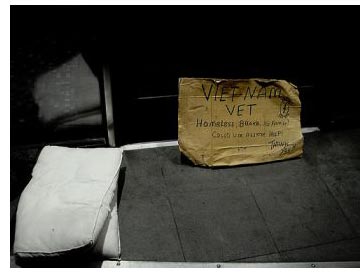 It’s hard to imagine a day when thousands of the homeless people on our streets were spit-and-polish members of the armed services, dispatched to points across the nation and throughout the world. Now, here they are in Los Angeles, an estimated 7,000 of our former troops, waging a war of survival.
It’s hard to imagine a day when thousands of the homeless people on our streets were spit-and-polish members of the armed services, dispatched to points across the nation and throughout the world. Now, here they are in Los Angeles, an estimated 7,000 of our former troops, waging a war of survival.
These men and women are no longer symbols of our military might; they are evidence of our shameful failure to protect them at home.
In interviews with outreach workers, they tell of lives plagued by sickness and despair. They’ve been stricken with everything from heart disease to tuberculosis to Hepatitis C and cancer. They’ve battled the demons of alcoholism and addiction. They’ve suffered assaults on the streets and been hospitalized and jailed numerous times—an expense that falls squarely on the public.
Help, however, is on the way.
On Wednesday, the Department of Veterans Affairs and a collection of federal, state and local agencies announced the creation of Veterans to Home, Project 60, a program aimed at providing permanent housing and support services to 60 veterans who’ve been identified as the most likely to die on the streets. It’s a modest but monumental step forward.
The veterans’ program is modeled after Project 50, an effort I’ve championed to provide permanent supportive housing to 50 of Skid Row’s most vulnerable and chronically homeless individuals.
The concept, taking root in cities across the country, is that if you first give a person a permanent home, then they’ll be far more likely to take advantage of the services made available to them, including health and mental health help. Taxpayers, in turn, will be spared the enormous costs of hospitalizations and incarceration.
Project 50 has demonstrated that the concept works.
The truth is that a concerted effort like this for our struggling veterans was long overdue. These kinds of homeless programs require immense cross-jurisdictional cooperation, something that isn’t a hallmark of government. But in this case, the cause has trumped the rivalries.
I salute Veterans Affairs for rising to the challenge, providing much needed housing vouchers, as well as the services of mental health and substance abuse experts.
The agency has tremendous resources, far more than any county in the country and far more than any nonprofit. If the VA becomes convinced that this is the way to solve veteran homelessness, then a tsunami of housing and services could follow for a significant slice of our homeless population.
I’d also like to thank our four private partners in this effort who have been in the forefront of the “housing first” movement—OPCC, Step Up on Second, St. Joseph Center and San Fernando Valley Community Mental Health Center. These organizations are supplying housing for the veterans and sharing their expertise with federal officials.
So next November, on Veterans Day, I know that I’ll not only be remembering those we’ve lost to battle but also those enduring a living hell on our streets in Los Angeles.
For more on this effort, here’s a column by Los Angeles Times columnist Steve Lopez and an editorial that recently appeared in The New York Times.
Posted 2/17/11
Budget plan a red flag
February 4, 2011
The Assembly Budget Committee held a special hearing in Los Angeles Friday on a key facet of Gov. Brown’s plan to eliminate California’s crippling deficit. Here is the testimony I provided on the governor’s “realignment” proposal.
***
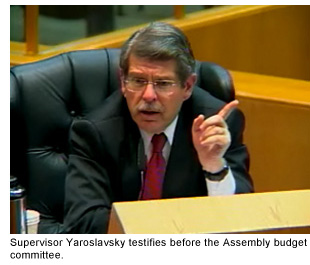 Welcome to our Hall of Administration and our board room, and we thank you for undertaking this hearing to discuss an issue that has our county and counties throughout the state extremely concerned. That issue is “realignment.”
Welcome to our Hall of Administration and our board room, and we thank you for undertaking this hearing to discuss an issue that has our county and counties throughout the state extremely concerned. That issue is “realignment.”
We recognize that the State of California has a budgetary tiger by the tail in the $28 billion deficit it faces. All of us appreciate the challenges being faced, and all of us welcome the Governor’s candid and transparent discussion of the magnitude of the crisis and its implications for the future. Los Angeles County—which, by all accounts, has managed its fiscal affairs as prudently as any major local government in California—understands what it takes to balance a budget.
Our County has publicly and privately conveyed to State officials, including the Governor himself, that as distasteful as the proposed cuts are, we are prepared to equitably share in the burden of those cuts—or, more appropriately, to ask the citizens who rely on county services to share in the burden of those cuts. The $12.5 billion in cuts will fall very heavily on human services, and California counties are the primary deliverer of such services in the State. We are anxious and prepared to work with both the Governor and the Legislature to help address this crisis.
Realignment is another matter, however. While we are prepared to work with the State on creating a realignment proposal that works for both of us, realignment is one of those concepts that sounds great in theory, but hasn’t always and won’t always work out in practice. The devil is always in the details. You certainly understand our wariness.
To put it simply: If the state proposes to save money by shifting both program responsibilities and the funding for them to counties, where will the savings be? Can it really be that local governments are so much more efficient that citizens will receive the same or higher levels of public service at substantially reduced cost?
If we are not careful, realignment will be less a swap of services and revenues to pay for them, and more a dumping of costly criminal justice and human services from the State’s books to the county’s books, the end result of which will be only to shift the huge deficits that the State has been incurring to counties which can afford them even less.
Proponents of realignment argue that it will restore power, flexibility and discretion to counties over their own finances. They assert that local governments and their constituencies will be free to choose whether to fund existing programs. This is simply not true. Most health and human service programs and their funding levels are already set by federal and state law for counties to administer with little or no discretion. Unless these constraints are lifted, this principal benefit of realignment will never be realized. And, lifting those constraints opens up an entirely different kind of debate over the equity and adequacy of the services that counties provide.
As to control over our own finances—this, too, is not true. Proposition 13 severely limited local governments’ ability to generate revenue by rolling back and capping local property assessments and tax rates. The problem has only grown more acute in the ensuing decades as the Legislature and voters have imposed new constraints and restrictions, most recently in adopting Proposition 26 last November, which sharply limits local fees. Any suggestion that Counties will have the ability to raise taxes or fees for services we may choose to provide—above what the state pays us for—is simply disingenuous.
To pay for realignment, the Governor has proposed a five-year extension of expiring tax revenues, subject to voter approval (and it is not clear that these revenues will be sufficient to pay for realignment). When asked what would happen in Year 6, the Governor said he’s hoping the economy will bounce back by then. Revenues fluctuate, and in fact, it’s a rule we all live by in government that during an economic downturn, when our people need services most, we have the fewest resources available to us. Hoping the economy will turn around in five years is simply not enough—we need a permanent, dedicated and stable revenue source if we are to take over these programs.
Let’s walk through a couple of examples. The realignment proposal calls on counties to take responsibility for jailing state parole violators and so-called “low level offenders.” As you know, Los Angeles County’s jails are overcrowded now. A federal judge has been breathing down our neck to deal with this persistent constitutional problem. There is simply no capacity to house state inmates without having to release county prisoners to the streets of our communities. Moreover, even if we did have the capacity, what makes the State think that we can absorb the cost of this added burden when the State can’t handle it now? It simply looks like shifting a bad debt from the State’s books to the counties’ books.
Another criminal justice proposal is to have probation take over the supervision of some parolees. Our staffing requirements for such a shift could be as high as at least 600 persons. Is the State prepared to pay us dollar for dollar what it will cost us to take over this job? Keep in mind that your parole officers are public safety officers who are entitled to a public safety pension. Our Probation officers are not. Even worse, in its infinite wisdom, the State gave its parole officers the 3% at 50 pension benefit which is breaking the back of many pension systems around the state. We did not. Are we expected to hire the state’s parole officers to handle this new responsibility at salaries and pensions that we don’t currently provide our own employees? As our District Attorney recently wrote, the budget proposal in the area of Corrections and Rehabilitation “will wreak havoc on Los Angeles County’s criminal justice system.”
Of the programs being proposed for Realignment, the biggest one in dollar terms is Foster Care and Child Welfare Services. Foster Care is a federal entitlement that requires us to provide services no matter how high the caseload. As you know, we are currently operating under a carefully negotiated waiver that provides not only a growth factor, but also flexibility on how to spend funds. Our CEO estimates that we would receive a fixed annual amount of $557 million to administer these programs. However, caseloads won’t remain fixed. It doesn’t take a mathematician to realize that rising caseloads with no growth factor for a program of this magnitude is a recipe for disaster. As it is, since the 1991 Realignment, we have absorbed significant cost increases in these programs due to unanticipated Federal licensing and monitoring requirements.
Where do we go from here? I have an abiding concern that the realignment proposals are not fully baked. To approve these proposals in the next 30 days, when consensus has not developed around them in years, is unrealistic and dangerous. Doing so will inevitably lead to a plethora of unintended consequences that will largely fall on us, not on the State.
The three basic principles that should guide us any realignment scheme going forward are: counties should not be net revenue losers; it should accurately and thoroughly scope out the current costs of each programmatic shift; and it should constitutionally guarantee a revenue stream that is sufficient to sustain the programmatic shift, not only for the next five years, but beyond, when the temporary taxes, if approved by the voters, expire. Anything short of that would wrap a millstone of fiscal insolvency around the necks of every one of California’s 58 counties.
Posted 2/4/11
Our night on the streets
February 1, 2011
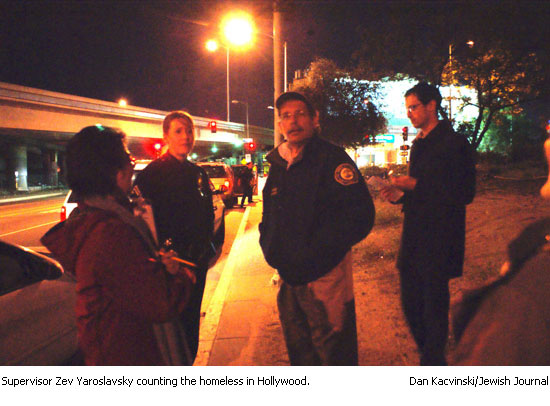 I’m often asked if there is a public will in Los Angeles to do anything about homelessness.
I’m often asked if there is a public will in Los Angeles to do anything about homelessness.
The answer came through loud and clear last week when more than 200 volunteers showed up in Hollywood for the biennial homeless count in Los Angeles County. Those of us taking part in the Hollywood count were playing a role in a nationwide effort aimed at identifying the number and location of homeless persons living on the streets.
The purpose is simple: If we are going to address homelessness, we need to know where to target our limited resources. The homeless count gives us a road map to make a real difference on this vexing issue as we move toward a goal of providing permanent supportive housing to the chronically homeless—those who have been on the streets for at least a year.
All across the region last week, groups like ours assembled around 9 p.m. and got our marching orders for the night ahead. Each team was assigned a territory and given some simple rules of engagement: keep a respectful distance and don’t interact with the people you’re counting; use your flashlight to light up your tally sheets, not those you’re tallying; and use caution and common sense in navigating the streets at night.
I had lots of company out there. Thousands mobilized to help with the federally-mandated count, administered here by the Los Angeles Homeless Services Authority. Among the volunteers were members of my staff. I’d like to share a few of their impressions with you here.
One of my deputies joined the counters in his hometown of Santa Monica. He came across people living in cars in the parking lot of a busy family restaurant—a sight that might have gone unremarked during the daytime. He also was struck by the juxtaposition of wealth and poverty, such as the homeless pair encamped just 50 feet from a trendy Italian bistro where patrons drop $200 on a dinner for two with wine.
The night-time trek, he said, definitely made him see his city in a new way.
Another deputy, who had taken part in the Santa Monica count in 2008, noticed a marked decrease in the number of homeless people on the same blocks this time around. That may be the result of Santa Monica’s efforts with the county to provide housing along with the services necessary to address the issues that render people homeless in the first place.
This deputy was struck by the homeless prevention measures she saw in place: trash dumpsters fenced off and locked, bright lighting, locked apartment and condo garages off the alleys, and less accessible areas to loiter. Overall, the city seemed clean and shiny, which made it even more heartbreaking to see homeless people huddled on sidewalks in worn sleeping bags or torn-apart cardboard boxes.
In West Hollywood, one of our staff teams wondered what and who they would encounter in their assigned tract—which included landmarks as various as the Mondrian Hotel and Barney’s Beanery. Their night of surveying began and ended with the two people they observed huddled under a blue tarp in a drugstore parking lot. A sheriff’s deputy accompanying our staffers knew the pair well. He said they’d come out to California from the Midwest years ago, eking out a living by recycling. They’d had run-ins with the law over their methamphetamine use, he said, and so far had rebuffed offers of help from the agency PATH (People Assisting the Homeless.)
Another 3rd District team hit the streets in Van Nuys. One of their experiences illustrated a challenge inherent in our assignment: who exactly should be counted as homeless, based on sight alone? Was that man in the hooded sweatshirt homeless—or just someone walking aimlessly through the neighborhood? When our team spotted the same man 10 minutes later, this time pushing a shopping cart loaded with possessions, the question was answered. He became part of the tally.
It will be months until the final results of the count are in. But one thing is already clear: Last Thursday night, the main room at the old Hollywood Municipal Building was bulging with people, enthusiasm and commitment. Despite the difficulty of the task, the scene of hundreds of people participating in a homeless count into the wee hours of the morning provided a rousing answer to anyone who doubts our community’s commitment to addressing homelessness.
Posted 2/1/11
A time to cool the rhetoric
January 10, 2011

On Saturday morning, before she was shot, Gabrielle Giffords was performing one of her most vital duties as a public servant. She was meeting with the public.
The Arizona congresswoman knew there were risks; last March, the windows of her office were shattered after her vote for health care reform. During her hotly contested campaign for reelection, gun gimmicks and imagery abounded.
On a map on Sarah Palin’s political action committee’s website, Giffords’ district was among a number that had been depicted with cross hairs. Her election opponent, meanwhile, held a campaign event in which participants were offered the opportunity to fire a fully loaded M-16 with him, a symbol of his assault on Giffords’ seat.
But none of this deterred Giffords from convening another of her “Congress on Your Corner” events. For she, like virtually every public official, understands the imperative of direct interaction with constituents.
During my 35 years in elected office in Los Angeles, I’ve been to hundreds of neighborhood meetings and town halls. Only when I’m in the community can I hear—and feel—the aspirations and frustrations of my constituents. Without this kind of relationship, I’d be left with middlemen of pundits and pollsters to help me gauge the public pulse—a very poor substitute for face-to-face encounters.
I feel certain that this weekend’s horrific shooting spree will not deter most public officials from meeting with large, sometimes unruly gatherings of constituents. Indeed, should our leaders become reluctant or fearful to engage the public they represent, our political system itself would be put at risk.
To be sure, it’s clear from all accounts that Giffords’ alleged assailant, who killed 6 people in a matter of seconds, was disturbed long before the bloodshed. He was rejected for military service, and he was expelled from community college for his bizarre behaviors. His disjointed and paranoid screeds against the government speak for themselves. (The fact that he was able to easily and legally buy an automatic handgun is a topic for another day soon.)
But I also believe that troubled individuals teetering on the edge of mayhem can be pushed into action by incendiary language mostly intended to win elections or amass TV ratings, words that create a climate of hostility, aggression and violence.
Congresswoman Giffords, who remains in critical condition, may have put it best last spring when she was asked about her district being targeted with cross hairs on Palin’s election map.
“When people do that,” Giffords said, “they’ve got to realize there’s consequences to that.”
For the time being, I’d suggest that politicians and media personalities, who exploit public fears and advance their careers through the use of vitriol, ratchet down the rhetoric and discipline themselves as we all reflect on the events that led to this national tragedy.
Posted 1/10/11
Counting on each other
January 6, 2011

Happy New Year to you all. Together, let’s start 2011 on the right foot—literally. Please join my staff and me for the bi-annual Homeless Count. The Los Angeles Homeless Services Authority needs 4,000 volunteers to hit the streets between January 25-27.
As you’ll see from this story on my website, the count is required for federal homeless funds to flow to counties and cities across the nation. Never before has there been a more determined commitment in the public and private sectors to end chronic homelessness by providing those in need with permanent housing and services.
Last month, the United Way of Greater Los Angeles and the Los Angeles Area Chamber of Commerce released a blueprint—called Home for Good—with the ambitious but achievable goal of ending chronic homelessness in five years.
And just this week, we were able to allocate nearly $1.7 million in Third District homeless funds to two organizations in the forefront of the growing movement to provide permanent supportive housing—Step up on Second and OPCC. For more details, read here.
So, I hope I can count on you to join this year’s Homeless Count and make a tangible difference in someone’s life.
The next chapter for DCFS
December 13, 2010
 With Monday’s announcement that Trish Ploehn is departing as director of the Department of Children and Family Services, the county now has a unique opportunity—and heavy responsibility—to bring in an executive team skilled enough to remake an agency in crisis.
With Monday’s announcement that Trish Ploehn is departing as director of the Department of Children and Family Services, the county now has a unique opportunity—and heavy responsibility—to bring in an executive team skilled enough to remake an agency in crisis.
Los Angeles County has no greater duty than to protect children from neglect and abuse. But tragically, we’ve too often seen the fatal consequences of the human and institutional failures of the agency entrusted with this responsibility, the Department of Children and Family Services.
To be sure, there also is no duty laden with more landmines because of the sheer numbers of children in the system—more than 30,000. There is little margin for error. One missed sign of danger, one missed home visit, one failure to fully investigate the facts of a neighbor’s tip, can bring to an end a life that has barely begun. And one preventable death is one too many.
With the stakes so high, and the inherent difficulties so great, it’s imperative that the new director be a visionary leader and strong manager. He or she must be committed to operating with transparency and accountability. Openness, within the confines of privacy laws, helps inform policymakers and the public about what works and what’s wrong in the way we protect the children in our care.
The agency’s new director also must be guided by facts, not political orthodoxy or financial incentives that are favorable to the department but that may be jeopardizing children.
Currently, the county participates in a federal program that provides financial incentives for DCFS to shrink its foster-care rolls and leave more at-risk kids at home, while providing their families with various voluntary services. The sentiments behind the program are laudable: family preservation, maintenance and support. But given the circumstances surrounding numerous child deaths, the time has come for a new director to determine whether the department has grown too dependent on a funding scheme that exposes children to peril in irreparably broken families.
These are the facts: during the past three years, almost all L.A. County children who died because of abuse and neglect did so at home, not in foster care. I’m not suggesting that we return to the days when we removed a child first and asked questions later. I am saying that our new director must investigate why this pattern of deaths exists. Are there common threads among these cases that have yet to be explored to see how we can make our current strategy safer?
Our new director must also be willing to tackle what surely will not be an easy sell within an entrenched DCFS bureaucracy that has seen no less than half a dozen directors in its 25-year history.
One of the department’s most crucial operations is its emergency response team. In it, are the people who assess the validity of complaints that flow non-stop into DCFS about the alleged mistreatment of children. A good decision on the front lines can protect a child from harm; a bad one puts the youngster in harm’s way. Yet the emergency response team is a first stop for new DCFS employees, whose lack of experience and training would seem to make them least qualified for this responsibility.
It is crucial that this situation be fixed. Experienced workers should be reassigned to areas where their skills are urgently needed. At a minimum, they could serve as on-the-job mentors for emergency response team staffers, some of whom openly acknowledge that they feel overwhelmed by and unprepared for the decisions and consequences they confront every day.
In the days and weeks ahead, we will embark on a broad and thorough search for a new DCFS director. I’m confident that this individual will not only have the right set of qualifications and experience for the job but a passion for the mission—a passion shared by thousands of DCFS workers anxious to help shape a new era.
A farewell to the lonely
December 9, 2010
Before dawn on Tuesday, the sad ritual began.
For ten straight hours, two veterans of L.A. County’s crematorium and cemetery solemnly filled a wide and deep grave with small plastic boxes containing the ashes of people whose bodies had gone unclaimed for more than three years. Back and forth the two men walked between the jam-packed storage shelves of the crematorium and the small cemetery just beyond its doors.
In all, they would respectfully and neatly stack 1,689 boxes in the ground. On the grave marker, there would be no names, no chiseled tributes to the deceased as being anyone’s beloved mother, father, husband or wife. The small stone would simply state the year of their passing—2007.
The core mission of Los Angeles County government is to provide for the poor and disadvantaged among us. We are their safety net—sometimes even in death. Over the decades, the county has buried the remains of thousands upon thousands of people whose bodies have gone unclaimed. Some of them, mostly the younger ones, may have died violently. Others lived long but, at the end, had no enduring ties and no one to grieve for them.
 So we, the people, give them the dignity they deserve in a graveside service east of the Civic Center, near County-USC Medical Center, the public hospital where a good number of them spent their final days.
So we, the people, give them the dignity they deserve in a graveside service east of the Civic Center, near County-USC Medical Center, the public hospital where a good number of them spent their final days.
For years, my colleague, Don Knabe, has reminded us during board meetings of these upcoming services, asking for a moment of silence to honor those who’ll soon be sharing a final resting place. This year was no different for Don, although the results were; a large media contingent showed up for the first time. I’m not sure why, but I’d like to think that, in these dire economic times, there’s a growing awareness of and empathy for those who are hurting.
“Their life was significant and important,” Father Chris Ponnet, director of spiritual care at County-USC, told this week’s gatherers. Prayers were read from Christian, Jewish and Islamic scriptures. These ceremonies, Father Ponnet said, “are a sign that society does not just throw away people just because they are unknown.”
“The blessing,” he said, “is that the county holds these services. The tragedy is that these people were disconnected from their families in the end.”
Our county aims to be one in which no single life is valued more than another, no matter what their lofty or lowly social status. This year, as I gather with family and friends to share the spirit of the holiday season, I’ll remember those 1,689 souls and be grateful for the many blessings in my life.
Posted 12/9/10




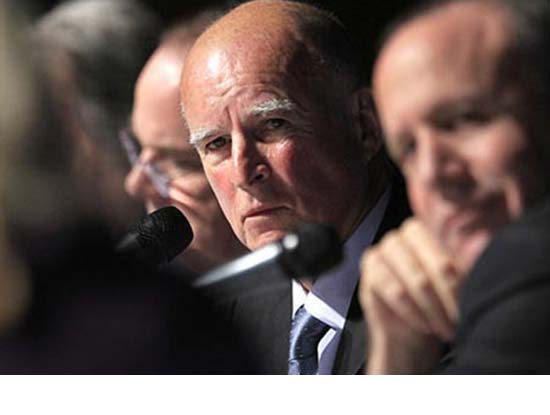

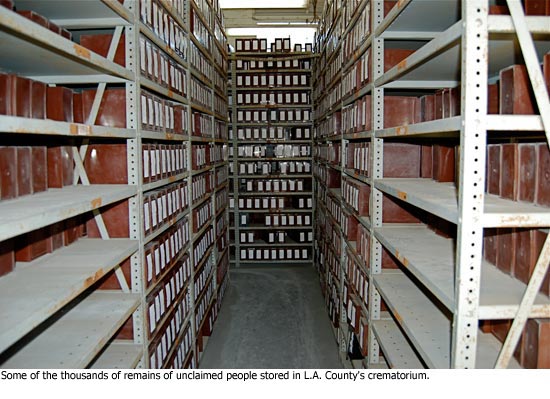





 Check for the latest closure information
Check for the latest closure information








